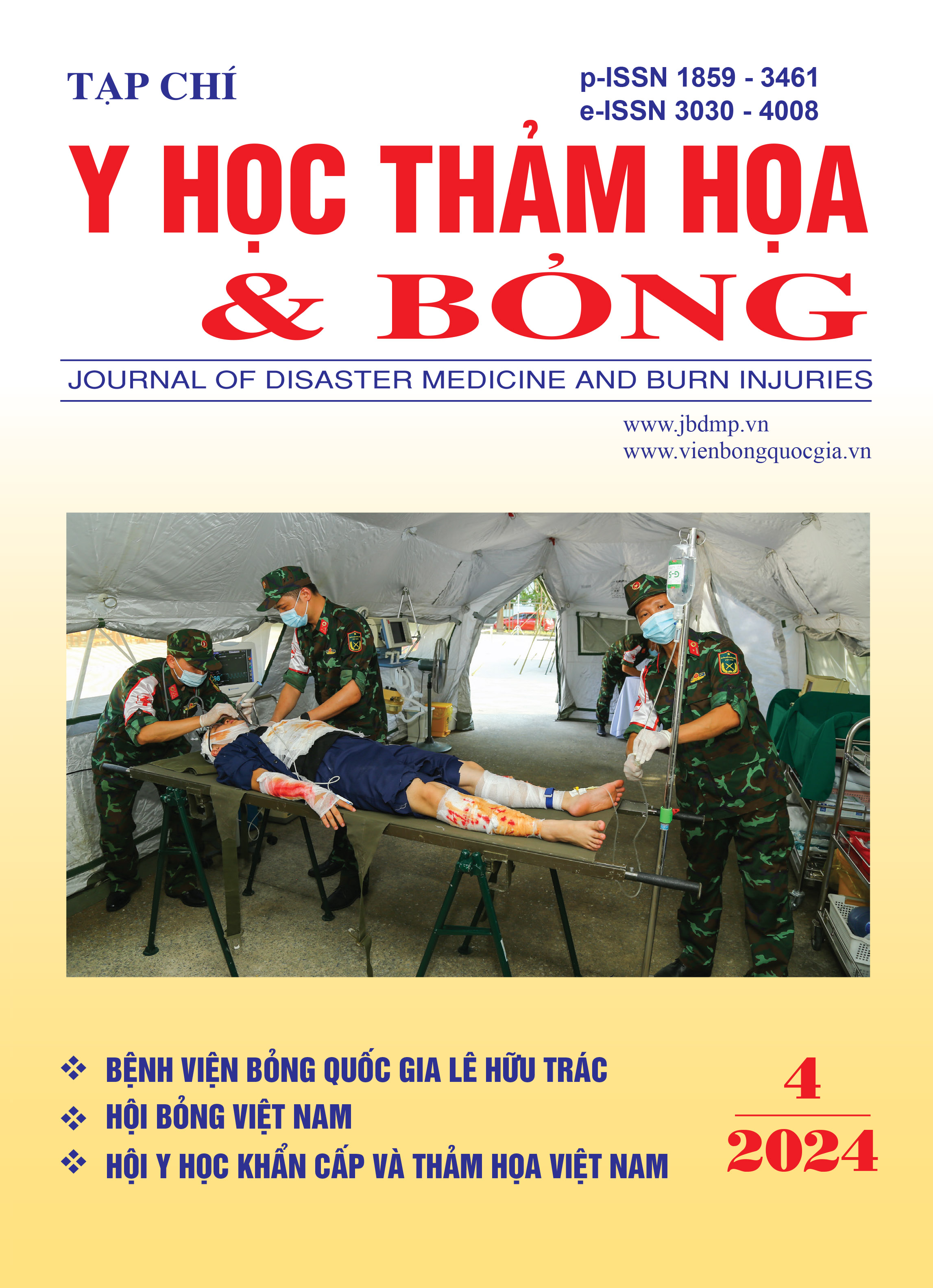Bước đầu đánh giá giá trị tiên lượng của IL-6 và sST2 với biến chứng ở bệnh nhân bỏng hô hấp
Main Article Content
Abstract
Objective: Evaluate the concentration and prognostic value of il-6 and sST2 in blood and bronchoalveolar lavage (BAL) for infectious complications and treatment outcomes in inhalation injury burn patients.
Subjects and methods: Prospective descriptive study on 20 adult inhalation injury burns patients, hospitalized within 48 hours of burn injury. Patients treated at the Intensive Care Unit - Le Huu Trac National Burns Hospital from August 2022 to August 2023.
Results: The patients studied had a median age of 37 years old, with the majority being 80% male, a median large burn area of 74.5%, and 41.5% deep burns. The classification of inhalation injury was mainly 1st degree (40%), 2nd degree (50%) with only 2 patients with 3rd degree (10%). The mortality rate of study patients was 65%. Pneumonia complications were 75% and the BAL IL-6 on day 7 was 212.47pg/ml, which was significant in predicting the risk of pneumonia (p < 0.05). Complications of sepsis were 25%, serum IL-6 value on day 7 was 316.03pg/ml, BAL IL-6 value on admission was 133.32pg/ml and sST2 BAL value 1.06 ng/ml on admission has predictive value for the risk of sepsis (p < 0.05). The serum IL-6 value in both times was 138.29 pg/ml and 313.47pg/ml, which was significant in predicting the risk of death (p < 0.05).
Conclusion: Quantitative tests of IL-6 and sST2 are valuable in predicting the risk of complications of pneumonia, sepsis and mortality in inhalation injury burn patients at the time of the day admission and day 7 after burns.
Article Details
Keywords
Biomarkers, inhalation injury
References
2. Liodaki E., Kalousis K., Mauss K.L. và cộng sự. (2015). Epidemiology of pneumonia in a burn care unit: the influence of inhalation trauma on pneumonia and of pneumonia on burn mortality. Ann Burns Fire Disasters, 28(2), 128-133.
3. Rech M.A., Mosier M.J., McConkey K. và cộng sự. (2019). Outcomes in Burn-Injured Patients Who Develop Sepsis. Journal of Burn Care & Research, 40(3), 269-273.
4. Mlcak R.P. (2021). Inhalation injury from heat, smoke, or chemical irritants..
5. Lê Ngọc Hùng và cộng sự. (2016). Khảo sát khoảng tham chiếu của xét nghiệm sST2 trên huyết thanh người Việt Nam bình thường.
6. Trần Ngọc Tuấn (2004). Nghiên cứu lâm sàng và ứng dụng phương pháp lọc máu liên tục góp phần điều trị người bệnh bỏng trong thời kỳ nhiễm độc nhiễm khuẩn, Luận án Tiến sỹ Y học, Học viện Quân y.
7. Frankel J.H., Boe D.M., Albright J.M. và cộng sự. (2018). Age-related immune responses after burn and inhalation injury are associated with altered clinical outcomes. Experimental Gerontology, 105, 78-86.


